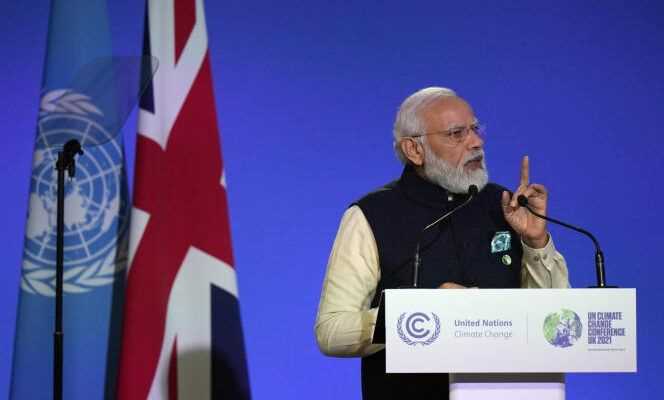India created the surprise, Monday 1er November, in Glasgow, Scotland. The South Asian giant has set itself the goal of achieving carbon neutrality by 2070, announced Prime Minister Narendra Modi in his speech, delivered the day after the opening of COP26. India, the third emitter of greenhouse gases behind China and the United States, was the only country among the biggest polluters on the planet not to have made a commitment on the issue of carbon neutrality. “The Prime Minister, true to his style, took everyone by surprise and the objective he set is particularly ambitious”, says Swati D’Souza, head of climate action research at the National Foundation for India.
Just last week, India was reluctant to announce a carbon neutrality target. “Carbon neutrality is not a solution, what matters is the amount of carbon that will be emitted into the atmosphere before reaching net zero”, Rameshwar Prasad Gupta, the most senior official in the environment ministry, said during a press meeting, stressing India’s low share of cumulative emissions. Since the pre-industrial era, the latter have only represented about 3.5% of the world total, where those of the United States account for about 20% and those of the European Union for 15%.
To avoid catastrophic climate impacts, scientists believe that net zero must be reached by 2050, twenty years before the date established by the Indian Prime Minister. “India likes to set goals below what it is capable of doing in order to better exceed them. If the country keeps all its other promises, then it could well achieve carbon neutrality before 2070 ”, Judge Swati D’Souza. India has announced that it will also increase its non-fossil energy capacity to 500 gigawatts by 2030, supplying 50% of its needs through renewables. Another promise made on Monday by the Prime Minister: reducing the carbon intensity of the economy by 45% by 2030.
“Significant moment”
The challenge for India will be to finance this transition. The country is still cruelly dependent on coal which currently provides the generation of 70% of its energy needs. “It is estimated today that 20 million people make a living from the coal industry and this transition will take some time”, Swati D’Souza details. Narendra Modi did not fail to point out that developing countries would need the support of developed countries. “India expects developed countries to make $ 1,000 billion in climate finance available as soon as possible,” did he declare. This is ten times more than the goal of raising $ 100 billion per year, which developed countries are not expected to reach before 2023. “India put the ball in the court of developed countries”, ruled Arunabha Ghosh, of the Energy, Environment and Water Council, a New Delhi-based think tank, and now she “Will monitor not only climate action, but also the climate finance provided”, he continued.
You have 15.6% of this article left to read. The rest is for subscribers only.
